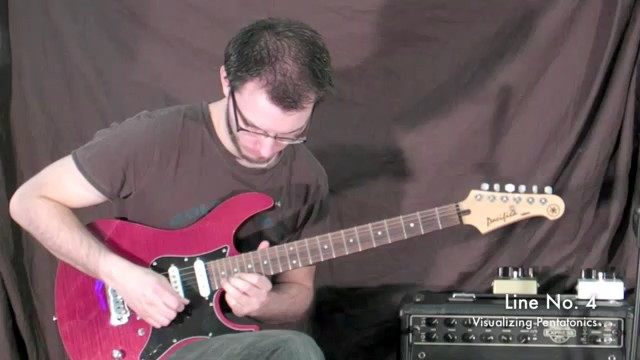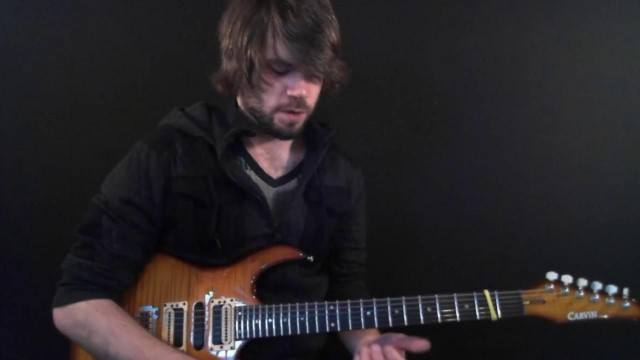So, how do these sus4 chords relate to our minor pentatonic scale?
Well, every minor pentatonic scale contains a couple of sus4 chords which we're going to focus on. Let's take Am pentatonic as our example. This scale contains the notes A, C, D, E and G. From these notes we can construct two sus4 chords a tone apart - Gsus4 containing the notes G, C and D and Asus4 consisting of the notes A, D and E. These two chords all contain 5 notes of the pentatonic scale and therefore we can outline the sound of the scale using these two chords.
Now, from a visualization perspective this gives us a very different way to perceive the scale than our standard box pattern approach.
To give you a method of quickly working out which two sus4 chords to use, we can say that we construct each sus chord from the root and b7 of the pentatonic scale in question. In other words, in A minor, we use a sus4 chord built from A (the root) and G (the b7th).
This method works for both line construction (soloing) and for comping (chord playing) equally well. If we use all the inversions all over the neck, we're basically mapping out our pentatonic scale in a very concise and approachable method.
Check out the next few videos for comping examples and the later videos for examples of line playing.














































